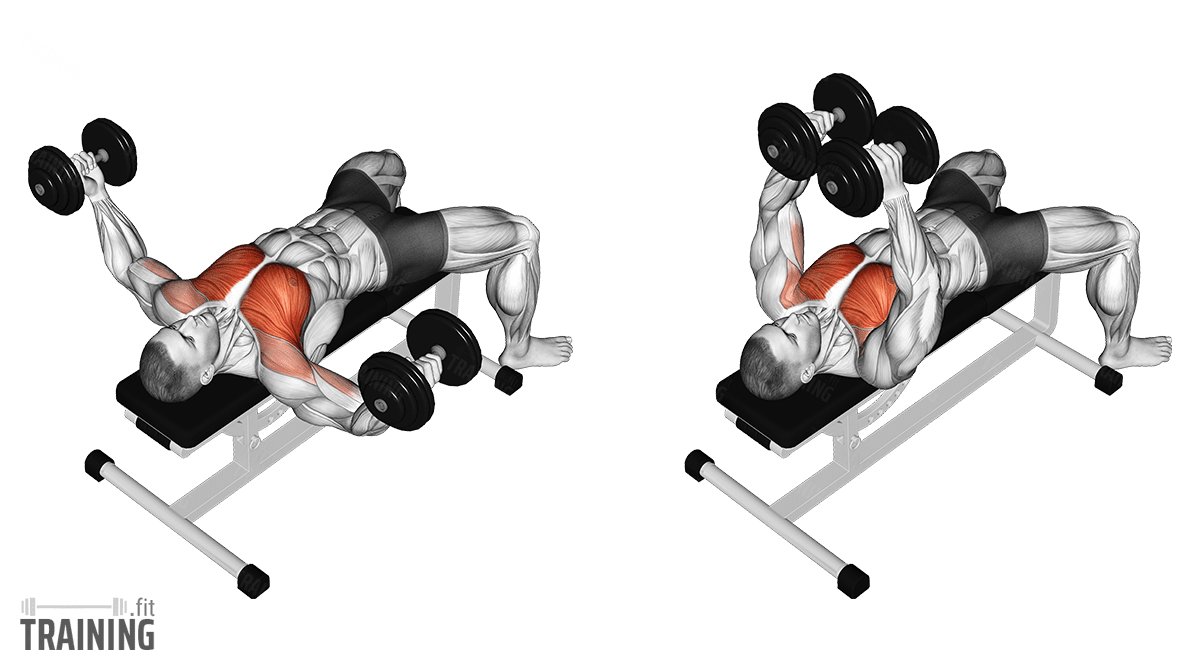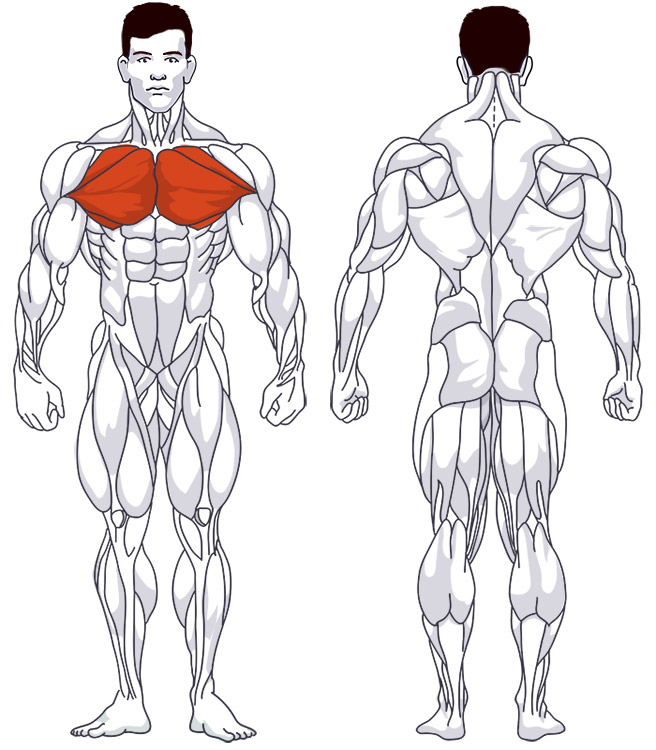Flys
Isolation exercise, Free weightsOverview

Main muscles
- Chest: Large pectoral muscle
(Musculus pectoralis major) - Chest: Small pectoral muscle
(Musculus pectoralis minor)
Training plans
Here you can find example plans for flys training:
Flys: Basics and alternatives

Involved main muscle groups:
Flys
Flys are a popular chest exercise that involves lying on your back, spreading your arms with dumbbells in your hands, and then lifting them above your body. This movement is similar to the machine chest flys exercise or using cable pulleys.
The reason for its popularity is simple: flys efficiently stretch the pectoral muscles, giving you an excellent muscle sensation.
There are various fly variations, such as on the incline bench with cable pulleys or on the incline bench with dumbbells. You can also perform the exercise with just one dumbbell, on the floor, making flys suitable for home workouts.
Correct execution
Executing flys correctly isn’t too difficult, but it requires focus and concentration, especially at first. Since you’re lying on your back and can’t see your arm movements in a mirror, you need to be extra aware of ensuring both arms move evenly and symmetrically.
To do this, keep your elbows in a fixed, slightly bent position throughout the movement. The position of your hands is also important for protecting your joints. In the starting position, your palms should face up and not rotate backward due to gravity.
Video tutorial
Step-by-step instructions
Hold a dumbbell in each hand and sit on a flat bench. Start by placing the dumbbells on your thighs, near your knees. If the dumbbells are too heavy to lift, alternate lifting your knees with momentum to help lift the dumbbells with your arms.
Lie back on the flat bench, bringing the dumbbells close to your chest. Once you’re comfortably lying on the bench (head, shoulder blades/shoulders, and butt on the bench), lift the dumbbells straight up in front of your torso.
Retract your shoulder blades.
Slightly angle your elbows (about 10 degrees) and slowly lower the dumbbells outward, spreading your arms. In this final position, your chest should be stretched. Be careful not to lower the dumbbells too far (see below).
Raise the dumbbells again by rotating your arms upward. Keep your elbows bent and your shoulder blades tense and retracted throughout the movement.
After completing your set, lower the dumbbells towards your chest, and then sit up with a bit of momentum if necessary. Don’t just drop the dumbbells on the floor while your arms are spread out.
Common mistakes
A common mistake is lowering the dumbbells too far. It’s tempting to lower them as much as possible for a greater chest stretch, but this can distort your form. Only lower the dumbbells as far as you can without opening your elbows, lifting your chest, or rotating your shoulders.
Keep your elbows slightly bent at the same angle throughout the movement, and maintain your shoulder blades tucked in and your shoulders pulled back. Don’t push your shoulders forward at the top of the movement. Even with the dumbbells in the top position, your shoulder blades should remain retracted.
By following these guidelines, you’ll ensure proper form while performing flys and minimize the risk of injury. Remember to stay focused on the movement and make adjustments as needed, so you can get the most out of this effective chest exercise.